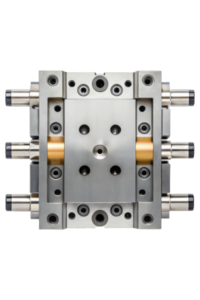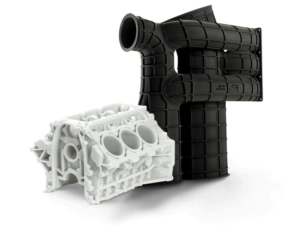Design for Manufacturability (DFM) is a proactive approach that entails tailoring a part’s design to align with the chosen manufacturing process used for its production. Today, it’s not sufficient for a product engineer to solely focus on fit and function; they must also possess a deep understanding of the manufacturing process and integrate its parameters into their design to ensure optimal part production. Neglecting DFM can lead to significant repercussions. By the time a product concept transitions from the design phase to testing and prototyping, a substantial portion, up to 80%, of the budget has already been allocated. Material costs, tooling expenses, and assembly costs are all accounted for. Once this commitment is made, altering the design becomes costly. To illustrate, consider the Rule of 10. As the development progresses, rectifying a defect in the design can cost up to 10 times more at each subsequent phase. This exponential increase in cost underscores the importance of identifying and addressing errors early in the development cycle. For instance, if the initial design phase costs $Y, rectifying defects during testing/prototyping can escalate to 10 x Y, and during production, it could reach 100 x Y. Consequently, even a single mistake during the concept or design phase can jeopardize a product launch. This emphasizes the criticality of Designing for Manufacturability.
Research has proven that Designing for Manufacturability yields significant time and cost savings throughout the product development cycle, often up to half the projected expenses. Integrating manufacturability principles for the chosen manufacturing method during the early design phase not only reduces the need for revisions but also accelerates the process, as opposed to the “I designed it, you build it” approach. Thus, comprehending the advantages, limitations, and techniques of the manufacturing process and applying this knowledge to design is the foundational step towards achieving an exceptional product. However, this is not the sole consideration. Given the pivotal role of the Concept to Design phase in a successful product launch, additional strategies are recommended to optimize your development cycle:
- Assemble a Comprehensive Team: Form a diverse team capable of identifying design shortcomings and anticipating alterations from customers or senior team members.
- Understand User Needs: Gain a deep understanding of customer or end-user requirements to prevent costly changes later in the development cycle.
- Optimize Concept: Streamline your concept to enhance both design and manufacturability.
- Universal Design: Avoid designing mirror images for right and left-handed users; opt for more universal designs to save time and resources.
- Symmetrical Design: Design symmetrical parts that eliminate the need for orientation during assembly.
To further assist in navigating the challenges tied to poorly designed injection molding or CNC machined parts, we’ve created The Smart Guide to Designing for Manufacturability. This resource offers insights into injection molding basics, best practices for part design, and features that can lead to substantial time and cost savings.
Elevate your product’s potential through strategic Design for Manufacturability. Contact us for personalized guidance and discover how to optimize your development cycle.


